|
News Archive: Sept. 1-30 |

|
Dusty old star offers window to our future
Astronomers have glimpsed dusty debris around an essentially dead star where gravity and radiation should have long ago removed any sign of dust. The discovery might provide insights into our own solar system's eventual demise several billion years from now.
 FULL STORY FULL STORY
 |  |

|
 |
Exploring the mystery of hurricane formation
All Atlantic hurricanes, no matter how grand they may become, begin the same. Each starts as a small disturbance in the atmosphere above equatorial Africa. These disturbances, called tropical waves, head west and, if conditions are just right, they increase in size and start spinning. Some develop into tropical depressions, grow into tropical storms and finally evolve into full-blown hurricanes.
 FULL STORY FULL STORY
 |  |

|
 |
OTHER HEADLINES Additional stories today
|
 |
NASA facilities weather Hurricane Rita -- The three NASA facilities that were in the path of Hurricane Rita are making damage assessments and cleaning up today. NASA's Johnson Space Center in Houston, Michoud Assembly Facility in New Orleans and Stennis Space Center in south Mississippi sustained minor or no storm damage.

Planetary radio astronomy turns 50 with fanfare -- Fifty years ago, Bernard Burke and Kenneth Franklin, of the Carnegie Institution's Department of Terrestrial Magnetism (DTM), picked up "the voice of Jupiter," at an observatory near Seneca, MD. It was the first radio emission detected from another planet.
|
 |
Discovery's crew gives insight into historic flight
The seven astronauts of space shuttle Discovery's return to flight mission recently gathered at Space Center Houston for a public celebration of their mission. Each crew member received post-flight awards from NASA officials, narrated an entertaining movie of highlights and personal footage taken during the mission and answered questions from the public.
 |  |
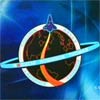
|
 |

Additional coverage for subscribers:
 VIDEO:
ASTRONAUTS RECEIVE POST-FLIGHT AWARDS PLAY VIDEO:
ASTRONAUTS RECEIVE POST-FLIGHT AWARDS PLAY
 VIDEO:
CREW NARRATES HOME MOVIES DIAL-UP | BROADBAND VIDEO:
CREW NARRATES HOME MOVIES DIAL-UP | BROADBAND
 VIDEO:
QUESTION AND ANSWER SESSION DIAL-UP | BROADBAND VIDEO:
QUESTION AND ANSWER SESSION DIAL-UP | BROADBAND
 MORE: STS-114 PRE-FLIGHT VIDEO MORE: STS-114 PRE-FLIGHT VIDEO
 MORE: MISSION VIDEO COVERAGE MORE: MISSION VIDEO COVERAGE
 SUBSCRIBE NOW SUBSCRIBE NOW

|
GPS modernization begins with Delta rocket launch
A Boeing Delta 2 booster pierced the night sky Sunday evening, successfully launching the first modernized Global Positioning System satellite to build a bridge from the navigation network of today to the advancements of tomorrow.
 FULL STORY FULL STORY
 MISSION STATUS CENTER MISSION STATUS CENTER
 PHOTO GALLERY: TOWER ROLL PHOTO GALLERY: TOWER ROLL
 PHOTO GALLERY: LAUNCH! PHOTO GALLERY: LAUNCH!
 LAUNCH EVENTS TIMELINE LAUNCH EVENTS TIMELINE
 GROUND TRACK MAP GROUND TRACK MAP
 |  |

|
 |

Video coverage for subscribers only:
 VIDEO:
DELTA ROCKET LIFTS OFF WITH GPS 2R-M1 QT VIDEO:
DELTA ROCKET LIFTS OFF WITH GPS 2R-M1 QT
 VIDEO:
LONGER CLIP SHOWING THE SUCCESSFUL LAUNCH QT VIDEO:
LONGER CLIP SHOWING THE SUCCESSFUL LAUNCH QT
 SUBSCRIBE NOW SUBSCRIBE NOW

|
Ferreting out the first stars
What did the very first stars look like? How did they live and die? Astronomers have ideas, but no proof. The first stars are so distant and formed so long ago that they are invisible to our best telescopes.
 FULL STORY FULL STORY
 |  |
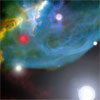
|
 |
Life extension for Europe's Mars Express craft
ESA's Mars Express mission has been extended by one Martian year, or about 23 months. The decision allows the spacecraft orbiting the Red Planet to continue building on the legacy of its own scientific success.
 FULL STORY FULL STORY
 |  |
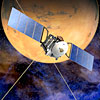
|
 |
Rocket launch paints sky with breath-taking scene
A grand spectacle in the evening sky created by a spacebound rocket delighted stargazers and frightened the uninformed across hundreds of miles in the southwestern United States on Thursday.
 FULL STORY FULL STORY
 MISSION STATUS CENTER MISSION STATUS CENTER
 |  |

|
 |
Chandra finds shocking evidence for cosmic rays
Astronomers have found compelling evidence that a supernova shock wave has produced a large amount of cosmic rays, particles of mysterious origin that constantly bombard the Earth. This discovery, made with NASA's Chandra X-ray Observatory, supports theoretical arguments that shock waves from stellar explosions may be a primary source of cosmic rays.
 FULL STORY FULL STORY
 |  |
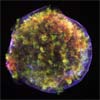
|
 |
Baby photo of stellar twins
Newborn stars are difficult to photograph. They tend to hide in the nebulous stellar nurseries where they formed, enshrouded by thick layers of dust. Now, Smithsonian astronomer T.K. Sridharan and his colleagues have photographed a pair of stellar twins in infrared light, which penetrates the dust. And these babies are whoppers, weighing several times the mass of the sun.
 FULL STORY FULL STORY
 |  |
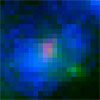
|
 |
Hurricane Rita closes Johnson Space Center
With the powerful Hurricane Rita posing an ominous threat for a potential impact in the coming days, Houston's Johnson Space Center is shutting down and giving control of the International Space Station to Russian engineers.
 FULL STORY FULL STORY
 |  |

|
 |
Mysterious blue star disk found around a black hole
Astronomers using the Hubble Space Telescope have identified the source of a mysterious blue light surrounding a supermassive black hole in our neighboring Andromeda Galaxy. Though the light has puzzled astronomers for more than a decade, the new discovery makes the story even more mysterious.
 FULL STORY FULL STORY
 |  |

|
 |
Astronomers wonder where Deep Impact comet formed
Comet Tempel 1 may have been born in the region of the solar system occupied by Uranus and Neptune today, according to one possibility from an analysis of the comet's debris blasted into space by NASA's Deep Impact mission. If correct, the observation supports a wild scenario for the solar system's youth, where the planets Uranus and Neptune may have traded places and scattered comets to deep space.
 FULL STORY FULL STORY
 |  |

|
 |
NASA selects new space shuttle program manager
One of the space shuttle program's most-liked members has been selected as its leader. Wayne Hale will ascend from deputy program manager to the top position, replacing Bill Parsons. Hale was a familiar face during the recent Discovery flight when he served as mission management team chairman.
 FULL STORY FULL STORY
 |  |

|
 |
OTHER HEADLINES Additional stories today
|
 |
Telenor contracts with Orbital to build Thor 2-R -- Telenor of Oslo, Norway has tapped Orbital Sciences to build the THOR 2-R geosynchronous communications satellite and to negotiate with International Launch Services for a launch aboard a Proton rocket.

NASA names Roe new Langley center director -- Lesa B. Roe has been named director of NASA's Langley Research Center in Hampton, Va., the nation's first civilian aeronautical research facility and NASA's oldest field center. She succeeds Roy Bridges, effective Oct. 3. Bridges announced his retirement Friday.
|
 |
NASA formally unveils lunar exploration architecture
NASA has unveiled an ambitious blueprint for returning American astronauts to the moon by 2018 using new rockets based on shuttle propulsion technology and a new reusable crew vehicle Administrator Mike Griffin described as "Apollo on steroids."
 FULL STORY FULL STORY
 READ NASA'S ANNOUNCEMENT READ NASA'S ANNOUNCEMENT
 FLIGHT PLAN GRAPHIC FLIGHT PLAN GRAPHIC
 THE NEW LAUNCH VEHICLES THE NEW LAUNCH VEHICLES
 FREQUENTLY ASKED QUESTIONS FREQUENTLY ASKED QUESTIONS
 |  |
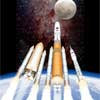
|
 |

Additional coverage for subscribers:
 VIDEO:
ARCHITECTURE PRESENTATION DIAL-UP | BROADBAND VIDEO:
ARCHITECTURE PRESENTATION DIAL-UP | BROADBAND
 VIDEO:
QUESTION AND ANSWER SESSION DIAL-UP | BROADBAND VIDEO:
QUESTION AND ANSWER SESSION DIAL-UP | BROADBAND
 VIDEO:
NARRATED ANIMATION OF NEW ROCKETS PLAY | FREE PREVIEW VIDEO:
NARRATED ANIMATION OF NEW ROCKETS PLAY | FREE PREVIEW
 VIDEO:
NARRATED ANIMATION OF LUNAR LANDER PLAY | FREE PREVIEW VIDEO:
NARRATED ANIMATION OF LUNAR LANDER PLAY | FREE PREVIEW
 SUBSCRIBE NOW SUBSCRIBE NOW

|
China's second manned spaceflight could be nearing
Recent reports indicate China's next manned venture into outer space is less than a month away. The mission will feature two Chinese military pilots-turned-astronauts that will give their Shenzhou 6 capsule a thorough shakedown in preparation for more advanced missions in the next few years.
 FULL STORY FULL STORY
 |  |
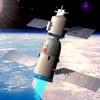
|
 |
Ghostly spokes in Saturn's rings spotted by Cassini
Delighted scientists on the Cassini imaging team will be breaking out the champagne in celebration of the first Cassini sighting of spokes, the ghostly radial markings discovered in Saturn's rings by NASA's Voyager spacecraft 25 years ago.
 FULL STORY FULL STORY
 |  |
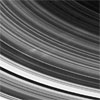
|
 |
NASA plans to resume work at Michoud tank facility
Recovery efforts at NASA's Michoud Assembly Facility in New Orleans are progressing better than originally anticipated, almost three weeks after Hurricane Katrina struck. Power has been restored to the entire complex where space shuttle external fuel tanks are made.
 FULL STORY FULL STORY
 |  |

|
 |
Cassini radar shows dramatic shoreline on Titan
Images returned during Cassini's recent flyby of Titan show captivating evidence of what appears to be a large shoreline cutting across the smoggy moon's southern hemisphere. Hints that this area was once wet, or currently has liquid present, are evident.
 FULL STORY FULL STORY
 |  |
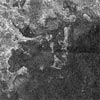
|
 |
Asteroids, not comets, caused early catastrophe
University of Arizona and Japanese scientists are convinced that evidence at last settles decades-long arguments about what objects bombarded the early inner solar system in a cataclysm 3.9 billion years ago.
 FULL STORY FULL STORY
 |  |

|
 |
Big ground telescopes eye the Deep Impact comet
When NASA's Deep Impact mission ploughed into comet 9P/Tempel 1 on July 4th of this year, the giant telescopes on Mauna Kea had a unique view of the massive cloud of dust, gas and ice expelled during the collision. A series of coordinated observations, made under ideal conditions by the world's largest collection of big telescopes, delivered surprising new insights into the ancestry and life cycles of comets.
 FULL STORY FULL STORY
 |  |

|
 |
OTHER HEADLINES Additional stories today
|
 |
Orbital wins NASA launch services contract -- NASA has awarded a Small Class Acquisition contract to the Orbital Sciences. It enables the agency to order launch services for up to 30 new missions with a minimum capability to deliver a 250 kilogram payload to a 200-kilometer circular orbit with an inclination of 28.5 degrees.
|
 |
Star eats companion
The European Space Agency's Integral space observatory, together with NASA's Rossi X-ray Timing Explorer spacecraft, has found a fast-spinning pulsar in the process of devouring its companion. This finding supports the theory that the fastest-spinning isolated pulsars get that fast by cannibalizing a nearby star.
 FULL STORY FULL STORY
 |  |

|
 |
Astronomers find black hole in search of a home
The detection of a super massive black hole without a massive host galaxy is the surprising result from a large Hubble and VLT study of quasars. This is the first convincing discovery of such an object. One intriguing explanation is that the host galaxy may be made almost exclusively of dark matter.
 FULL STORY FULL STORY
 |  |

|
 |
Squinting at Telesto
The blob of light seen here in this Cassini spacecraft picture is Saturn's moon Telesto, which shares its orbital path with the much larger moon Tethys. Telesto is 15 miles across. This view hints at a flattened, potato-like shape for Telesto -- a common shape for Saturn's smaller moons.
 FULL STORY FULL STORY
 |  |

|
 |
Probe begins daring close encounter with asteroid
A $100 million Japanese space explorer parked in the vicinity of an enigmatic asteroid this week, allowing scientists to get a first glimpse of the mid-sized rock that will become the source of the first samples of such an object to ever be returned to Earth.
 FULL STORY FULL STORY
 |  |

|
 |
Hubble catches scattered light from the Boomerang
The Hubble Space Telescope has "caught" the Boomerang Nebula in these new images. This reflecting cloud of dust and gas has two nearly symmetric lobes of matter that are being ejected from a central star. Over the last 1,500 years, nearly one and a half times the mass of our Sun has been lost by the central star of the Boomerang Nebula in an ejection process known as a bipolar outflow.
 FULL STORY FULL STORY
 |  |
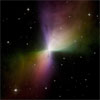
|
 |
OTHER HEADLINES Additional stories today
|
 |
Mars Express instrument under investigation -- The European Space Agency has started a technical investigation into the Planetary Fourier Spectrometer onboard Mars Express, after a problem developed in the instrument.

NASA names new Stennis center director -- NASA named William (Bill) W. Parsons as the new director of NASA's John C. Stennis Space Center in south Mississippi, effective immediately. Parsons succeeds retired Rear Admiral Thomas Donaldson, USN. Parsons returns to the position he held prior to becoming Space Shuttle program manager in May 2003.
|
 |
Most distant explosion smashes previous record
Scientists using NASA's Swift satellite and several ground-based telescopes have detected the most distant explosion yet, a gamma-ray burst from the edge of the visible universe.
 FULL STORY FULL STORY
 |  |

|
 |

Additional coverage for subscribers:
 AUDIO:
LISTEN TO MONDAY'S PRESS BRIEFING PLAY AUDIO:
LISTEN TO MONDAY'S PRESS BRIEFING PLAY
 SUBSCRIBE NOW SUBSCRIBE NOW

|
Boeing gets contract to feed ISS power to shuttles
NASA signed a $68.35 million modification to the International Space Station contract with The Boeing Company. The modification provides a system to supply station electrical power to docked space shuttles, enabling the orbiter to stay longer at the complex.
 FULL STORY FULL STORY
 |  |
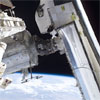
|
 |
Mars probe uses Moon to test high-resolution camera
This crescent view of Earth's Moon comes from a camera test by NASA's Mars Reconnaissance Orbiter spacecraft on its way to the Red Planet. The picture was taken last week at a distance of about 6 million miles from the Moon.
 FULL STORY FULL STORY
 |  |

|
 |
Rapid-born planets a baby picture of early solar system
Using NASA's Spitzer Space Telescope, a team of astronomers led by the University of Rochester has detected gaps ringing the dusty disks around two very young stars, which suggests that gas-giant planets have formed there. A year ago, these same researchers found evidence of the first "baby planet" around a young star, challenging most astrophysicists's models of giant-planet formation.
 FULL STORY FULL STORY
 |  |

|
 |
Titan may hold keys for exotic brand of life
Saturn's moon Titan has long been a place of interest to astrobiologists, primarily because of its apparent similarities to the early Earth at the time life first started. A thick atmosphere composed primarily of nitrogen and abundant organic molecules (the ingredients of life as we know it) are among the important similarities between these two otherwise dissimilar planetary bodies.
 FULL STORY FULL STORY
 |  |
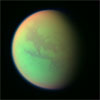
|
 |
Unmanned cargo craft safely docks to station
The International Space Station received a supply shipment from Earth Saturday when a Russian cargo freighter successfully docked to the outpost. The linkup occurred at 10:42 a.m. EDT (1442 GMT) while flying 220 miles over Central Asia. The Progress is carrying food, water, air, thruster fuel and equipment for the station and its resident crew.
 EARLIER STORY EARLIER STORY
 |  |
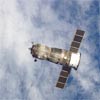
|
 |

Additional coverage for subscribers:
 VIDEO:
CARGO SHIP SAFELY DOCKS TO THE SPACE STATION PLAY VIDEO:
CARGO SHIP SAFELY DOCKS TO THE SPACE STATION PLAY
 SUBSCRIBE NOW SUBSCRIBE NOW

|
Work continues on solar system's new objects
When planetary scientists announced on July 29 that they had discovered a new planet larger than Pluto, the news overshadowed the two other objects the group had also found. But all three objects are odd additions to the solar system, and as such could revolutionize our understanding of how our part of the celestial neighborhood evolved.
 FULL STORY FULL STORY
 |  |
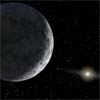
|
 |
Simulation probes forces behind Jovian jet streams
Turbulence driven by sunlight and thunderstorm activity may explain the multiple east-west jet streams on Jupiter and Saturn and even produce strong winds extending hundreds or thousands of kilometers into the interior, far below the altitudes where the jets are driven.
 FULL STORY FULL STORY
 |  |

|
 |
When will the next space shuttle launch?
Two key NASA facilities in the path of Hurricane Katrina suffered relatively minor damage, agency officials said Thursday, but hundreds of government and contractor workers are now homeless and recovery costs could top $1 billion when all is said and done. NASA managers do not yet know what impact the storm damage will have on plans to launch the next shuttle mission, a flight that had been tentatively targeted for takeoff in early March.
 FULL STORY FULL STORY
 |  |

|
 |
Russian Proton rocket launches Canadian satellite
A powerful broadcasting platform to beam television, data and air-traffic navigation signals across North America arrived in orbit Friday, capping a 9-hour ascent atop a Russian-made rocket.
 FULL STORY FULL STORY
 MISSION STATUS CENTER MISSION STATUS CENTER
 |  |

|
 |
Asteroid may be embryonic planet harboring water ice
Observations of 1 Ceres, the largest known asteroid, have revealed that the object may be a "mini planet," and may contain large amounts of pure water ice beneath its surface.
 FULL STORY FULL STORY
 |  |
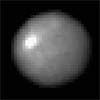
|
 |
Space station cargo craft launched by Soyuz rocket
An automated resupply vessel filled with 5,200 pounds of food, water, equipment and fuel began its two-day trek to the International Space Station Thursday, successfully rocketing into orbit atop a Russian booster from Baikonur Cosmodrome.
 FULL STORY FULL STORY
 |  |
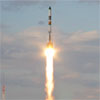
|
 |
Spitzer and Deep Impact build recipe for comet soup
When Deep Impact smashed into comet Tempel 1 on July 4, 2005, it released the ingredients of our solar system's primordial "soup." Now, astronomers using data from NASA's Spitzer Space Telescope and Deep Impact have analyzed that soup and begun to come up with a recipe for what makes planets, comets and other bodies in our solar system.
 FULL STORY FULL STORY
 |  |
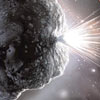
|
 |
Tiny Enceladus may hold ingredients of life
Saturn's tiny moon Enceladus is "absolutely" a highlight of the Cassini mission and should be targeted in future searches for life, says the leader of the spacecraft's visual and infrared mapping spectrometer team.
 FULL STORY FULL STORY
 |  |

|
 |
Deep Impact comet mission producing surprises
Researchers involved in NASA's Deep Impact mission have been piecing together data from the July 4th collision with comet Tempel 1 and finding surprising results. For example, the comet's nucleus heart has a very fluffy structure that is weaker than a bank of powder snow. The fine dust of the comet is held together by gravity. However, that gravity is so weak, if you could stand on the bank and jump, you would launch yourself into space.
 FULL STORY FULL STORY
 SEE OUR COVERAGE FROM JULY 4TH IMPACT SEE OUR COVERAGE FROM JULY 4TH IMPACT
 |  |
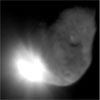
|
 |

Additional coverage for subscribers:
 VIDEO:
IMPACT MOVIES FROM MOTHERSHIP (NARRATED) PLAY VIDEO:
IMPACT MOVIES FROM MOTHERSHIP (NARRATED) PLAY
 VIDEO:
RIDE ALONG AS THE IMPACTOR SLAMS INTO TARGET PLAY VIDEO:
RIDE ALONG AS THE IMPACTOR SLAMS INTO TARGET PLAY
 VIDEO:
LEAD SCIENTISTS PRESENTS LATEST RESULTS PLAY VIDEO:
LEAD SCIENTISTS PRESENTS LATEST RESULTS PLAY
 VIDEO:
POST-ENCOUNTER NEWS BRIEFING DIAL-UP | BROADBAND VIDEO:
POST-ENCOUNTER NEWS BRIEFING DIAL-UP | BROADBAND
 AUDIO:
LISTEN TO NEWS CONFERENCE MP3 AUDIO:
LISTEN TO NEWS CONFERENCE MP3

 VIDEO:
"DEEP IMPACT: THE MISSION" MOVIE PLAY VIDEO:
"DEEP IMPACT: THE MISSION" MOVIE PLAY
 VIDEO:
"DIGGING OUT THE SCIENCE" PLAY VIDEO:
"DIGGING OUT THE SCIENCE" PLAY
 VIDEO:
RECAP OF IMPACTOR DEPLOY ACTIVITIES PLAY VIDEO:
RECAP OF IMPACTOR DEPLOY ACTIVITIES PLAY
 VIDEO:
PREVIEW OF THE ENCOUNTER TIMELINE PLAY VIDEO:
PREVIEW OF THE ENCOUNTER TIMELINE PLAY
 VIDEO:
LEARN MORE ABOUT THE SPACECRAFT PLAY VIDEO:
LEARN MORE ABOUT THE SPACECRAFT PLAY
 VIDEO:
SCIENCE DATA FROM COMET OUTBURSTS PLAY VIDEO:
SCIENCE DATA FROM COMET OUTBURSTS PLAY
 SUBSCRIBE NOW SUBSCRIBE NOW

|
OTHER HEADLINES Additional stories today
|
 |
ILS Proton to boost massive satellite for DIRECTV -- Following the successful launch of the DIRECTV 8 satellite in May, DIRECTV has contracted with International Launch Services for another mission on a Proton vehicle. The launch, on a Russian-built Proton/Breeze M rocket, is planned for second quarter 2007 from the Baikonur Cosmodrome in Kazakhstan.

Arianespace to launch THAICOM 5 -- The THAICOM 5 satellite launch contract was signed at World Satellite Business Week 2005 by Dr. Dumrong Kasemset, Executive Chairman of Shin Satellite Plc, and Jean-Yves Le Gall, Chief Executive Officer of Arianespace. THAICOM 5 is slated for an Ariane 5 launch in 2006 from Europe's Spaceport in Kourou, French Guiana.
|
 |
Evidence says some comets may have become asteroids
Some asteroids that have comet-like orbits may actually be comets that have lost gases and other easily vaporized substances, according to a NASA research team. The team studied infrared light from 55 asteroids using NASA's Spitzer Space Telescope to better understand possible links between asteroids and comets.
 FULL STORY FULL STORY
 |  |
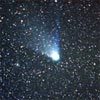
|
 |
Hubble makes movie of Neptune's atmosphere
New NASA Hubble Space Telescope images of the distant planet Neptune show a dynamic atmosphere and capture the fleeting orbits of its satellites. The images have been assembled into a time-lapse movie revealing the orbital motion of the satellites.
 FULL STORY FULL STORY
 |  |
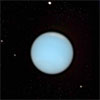
|
 |
OTHER HEADLINES Additional stories today
|
 |
$14.2-Million award for giant telescope -- The Large Synoptic Survey Telescope (LSST) has received the first year of a four-year, $14.2 million award from the National Science Foundation to design and develop a world-class, 8.4-meter telescope scheduled for completion in 2012. The LSST will image an area of the sky roughly fifty times that of the full moon every 15 seconds, opening a movie-like window on objects that change or move on rapid time scales - supernovae explosions which can be seen halfway across the universe, nearby asteroids which might potentially strike Earth, and faint objects in the outer solar system, far beyond Pluto.

Statement issued on future of UK planetary sciences -- The Royal Astronomical Society (RAS) has issued a statement calling for continued growth in funding of planetary sciences in the UK and for more universities to consider establishing planetary science departments.
|
 |
Researchers discover clue to start of universe
If you want to hear a little bit of the Big Bang, you're going to have to turn down your stereo. That's what neighbors of MIT's Haystack Observatory found out. They were asked to make a little accommodation for science, and now the results are in: Scientists at Haystack have made the first radio detection of deuterium, an atom that is key to understanding the beginning of the universe.
 FULL STORY FULL STORY
 |  |

|
 |
Mars rover becomes accomplished hill climber
The Mars Exploration Rover Spirit has pulled off the unthinkable by ascending to the summit of a Martian hilltop, a breathtaking perch where the never-say-die craft has captured an inspiring panorama of the surrounding vistas and given Earth-bound geologists a window in the area's ancient past.
 FULL STORY FULL STORY
 |  |
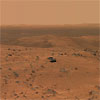
|
 |

Additional coverage for subscribers:
 VIDEO:
SPIRIT'S PANORAMA PRESENTED WITH EXPERT NARRATION PLAY VIDEO:
SPIRIT'S PANORAMA PRESENTED WITH EXPERT NARRATION PLAY
 VIDEO:
ROVER DRIVER DESCRIBES GUIDING SPIRIT UP THE HILL PLAY VIDEO:
ROVER DRIVER DESCRIBES GUIDING SPIRIT UP THE HILL PLAY
 VIDEO:
A LOOK AT SPIRIT'S RECENT SCIENCE ACTIVITIES PLAY VIDEO:
A LOOK AT SPIRIT'S RECENT SCIENCE ACTIVITIES PLAY
 VIDEO:
OPPORTUNITY ROVER'S LATEST SCIENCE FINDINGS PLAY VIDEO:
OPPORTUNITY ROVER'S LATEST SCIENCE FINDINGS PLAY
 VIDEO:
CURRENT HEALTH STATUS OF BOTH ROVERS PLAY VIDEO:
CURRENT HEALTH STATUS OF BOTH ROVERS PLAY
 VIDEO:
THURSDAY'S NEWS BRIEFING DIAL-UP | BROADBAND 1 & 2 VIDEO:
THURSDAY'S NEWS BRIEFING DIAL-UP | BROADBAND 1 & 2
 SUBSCRIBE NOW SUBSCRIBE NOW

|
Fastest pulsar speeding out of galaxy, astronomers find
A speeding, superdense neutron star somehow got a powerful "kick" that is propelling it completely out of our Milky Way Galaxy into the cold vastness of intergalactic space. Its discovery is puzzling astronomers who used the Very Long Baseline Array radio telescope to directly measure the fastest speed yet found in a neutron star.
 FULL STORY FULL STORY
 |  |

|
 |
Russia scores success in its 1,700th Soyuz launch
���Russia's oldest rocket family passed another milestone Friday in a space delivery mission to haul a military satellite into orbit for the Russian defense ministry.
 FULL STORY FULL STORY
 |  |
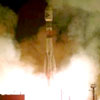
|
 |
Prize being shared by planet search leaders
Astronomer Geoffrey Marcy's tenacious pursuit of planets outside our solar system has paid off with the discovery by him and his team of more than 110 extrasolar planets.
 FULL STORY FULL STORY
 |  |

|
 |
|
Read our earlier news archive page.
|



